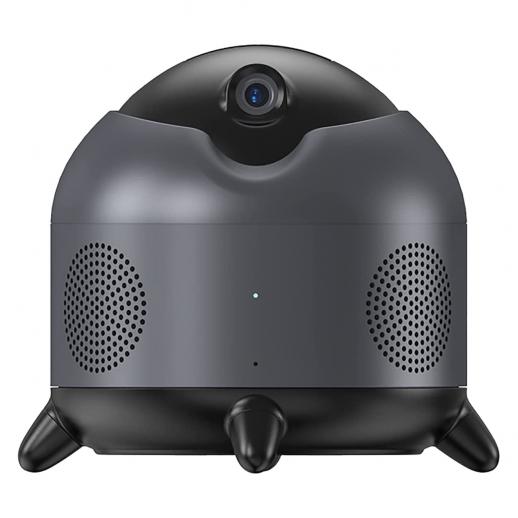Can You Connect To Multiple Bluetooth Speakers?
Bluetooth technology has become an integral part of our daily lives, enabling wireless communication between devices. One common question that arises is whether it is possible to connect to multiple Bluetooth speakers simultaneously. This capability can be particularly useful for creating a more immersive audio experience, whether for a party, a home theater setup, or simply to enjoy music in multiple rooms. In this article, we will explore the feasibility of connecting to multiple Bluetooth speakers, the methods available, and practical solutions to achieve this goal.

Understanding Bluetooth Technology
Bluetooth is a wireless communication standard designed for short-range connectivity between devices. It operates in the 2.4 GHz ISM band and is widely used for connecting peripherals like headphones, speakers, keyboards, and mice to computers and smartphones. The primary advantage of Bluetooth is its simplicity and ease of use, but it does have limitations, particularly when it comes to connecting multiple devices simultaneously.
Bluetooth Limitations
Traditional Bluetooth technology is designed for one-to-one connections, meaning a single source device (like a smartphone or computer) can typically connect to only one Bluetooth speaker at a time. This limitation is due to the way Bluetooth profiles and protocols are structured. However, advancements in Bluetooth technology and the introduction of new features have made it possible to overcome this limitation to some extent.
Methods to Connect Multiple Bluetooth Speakers
There are several methods to connect multiple Bluetooth speakers to a single source device. These methods vary in complexity and effectiveness, and the best solution depends on the specific requirements and available equipment.
1. Bluetooth 5.0 and Dual Audio
Bluetooth 5.0, introduced in 2016, brought several improvements over previous versions, including increased range, speed, and data throughput. One of the notable features of Bluetooth 5.0 is Dual Audio, which allows a single source device to stream audio to two Bluetooth speakers simultaneously. This feature is particularly useful for creating a stereo sound experience or for playing music in different rooms.
To use Dual Audio, both the source device and the Bluetooth speakers must support Bluetooth 5.0. Additionally, the source device's operating system must have the necessary software support. For example, Samsung's Galaxy smartphones with Bluetooth 5.0 support Dual Audio, allowing users to connect two Bluetooth speakers at once.
2. Manufacturer-Specific Solutions
Some manufacturers offer proprietary solutions to connect multiple Bluetooth speakers. These solutions often involve using a dedicated app or firmware that enables multi-speaker connectivity. For example:
- Bose: Bose offers the Bose Connect app, which allows users to pair two Bose Bluetooth speakers for synchronized audio playback.
- JBL: JBL's Connect+ feature enables users to connect up to 100 JBL speakers for a synchronized audio experience.
- Ultimate Ears (UE): UE's BOOM and MEGABOOM speakers can be paired using the UE app to create a multi-speaker setup.
These manufacturer-specific solutions are convenient but are limited to speakers from the same brand and often require the use of a dedicated app.
3. Bluetooth Transmitters and Splitters
Another method to connect multiple Bluetooth speakers is by using a Bluetooth transmitter or splitter. These devices can take a single audio source and transmit it to multiple Bluetooth speakers. Bluetooth transmitters are particularly useful for older devices that do not support Bluetooth 5.0 or Dual Audio.
Bluetooth transmitters come in various forms, including standalone devices and adapters that can be connected to the audio output of a source device. Some transmitters support multiple connections, allowing users to pair two or more Bluetooth speakers simultaneously.
4. Wired and Wireless Combination
For those who do not mind a bit of wiring, a combination of wired and wireless connections can be used to achieve multi-speaker audio. For example, a Bluetooth speaker with an auxiliary (AUX) output can be connected to another speaker using an AUX cable. This method allows the first speaker to receive the Bluetooth signal and then pass the audio to the second speaker via the wired connection.
Practical Considerations
While it is possible to connect multiple Bluetooth speakers using the methods described above, there are some practical considerations to keep in mind:
- Audio Sync: One of the challenges of connecting multiple Bluetooth speakers is maintaining audio synchronization. Bluetooth introduces a slight delay in audio transmission, and when multiple speakers are involved, this delay can become noticeable. Manufacturer-specific solutions and Bluetooth 5.0's Dual Audio feature are designed to minimize this issue, but it may still be present in some setups.
- Range and Interference: Bluetooth has a limited range, typically around 30 feet (10 meters) for most devices. Obstacles like walls and furniture can further reduce this range. Additionally, Bluetooth operates in the 2.4 GHz band, which is shared with other wireless devices like Wi-Fi routers and microwave ovens, potentially causing interference.
- Battery Life: Using multiple Bluetooth speakers can drain the battery of the source device more quickly. It is essential to ensure that both the source device and the speakers have sufficient battery life for the intended use.
Connecting to multiple Bluetooth speakers is a practical and achievable goal, thanks to advancements in Bluetooth technology and manufacturer-specific solutions. Whether using Bluetooth 5.0's Dual Audio feature, proprietary apps from speaker manufacturers, Bluetooth transmitters, or a combination of wired and wireless connections, users have several options to create a multi-speaker audio setup.
When choosing the best method, it is essential to consider factors like audio synchronization, range, interference, and battery life. By understanding these considerations and selecting the appropriate solution, users can enjoy a seamless and immersive audio experience with multiple Bluetooth speakers.
In summary, while traditional Bluetooth technology is designed for one-to-one connections, modern advancements and innovative solutions have made it possible to connect multiple Bluetooth speakers. Whether for a party, a home theater, or multi-room audio, users can now enjoy the flexibility and convenience of wireless audio with multiple speakers.
